
Final Leg of the Train Trip Through the Copper Canyon
Nov. 12, 2006
We left Bahuichivo at about 7 a.m. on the final leg of our train trip through
the Copper Canyon. Because of the early hour and the depth of the canyon, most
of the canyon was in deep shadow, while the mountain tops were in bright
sunshine. As a result, the contrast range between the canyon and the mountain
peaks and bright sky was rather large. Our eyes adjust to the large contrast
range pretty easily, but cameras don't. It was a difficult photographic
situation. At least, that is my excuse for having few good pictures.

Leaving Bahuichivo, we headed into the depths of the canyon.
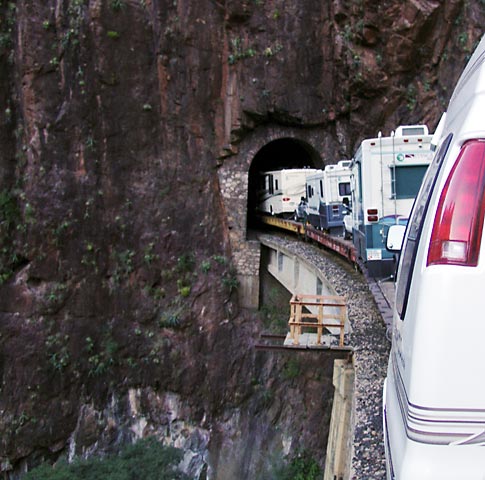
This trestle led us straight into a tunnel; it was like heading straight for
a wall.
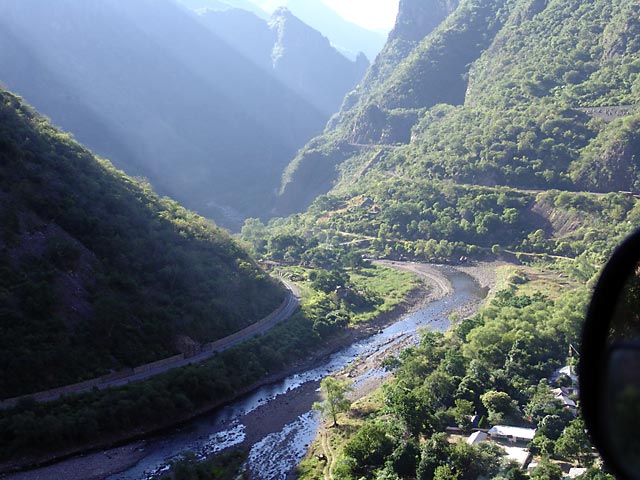
From this point you can see three levels of railroad track. There are two
levels on the right side of the canyon and one level of the left side. The
train, heading west to Los Mochis, enters this area on the upper level on the
right side; the river is one your left. Utilizing a series of tunnels, the train
makes a 180 degree turn and comes back on the lower level on the right side of the
canyon; the river is now on your right. It then makes another 180 degree turn by
crossing the river on a bridge and heads down the canyon on the left side, with
the river on the right.
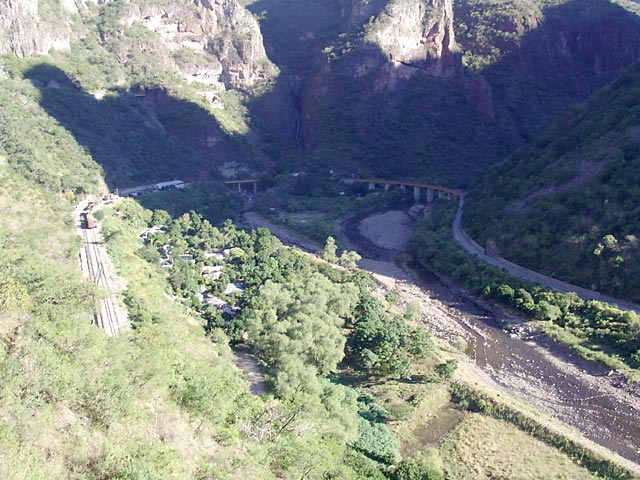
This is the view looking the other way, showing the bridge that allows the
train to make a U-turn.
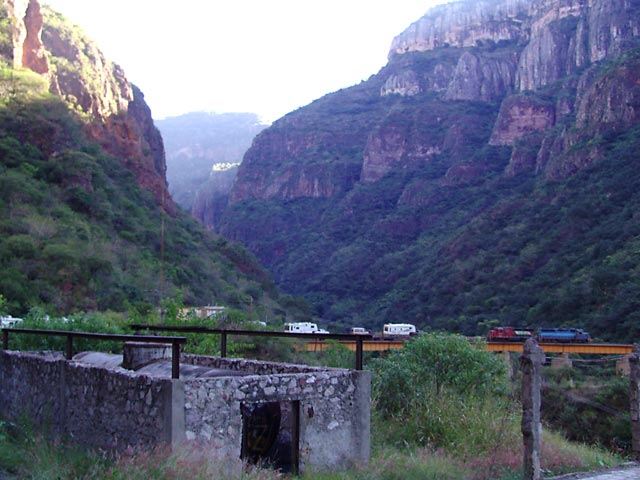
We are now crossing the river and will soon be heading down canyon with the
river on the right.

Crossing the bridge to get to the other side of the canyon. We are now
entering the lowest level of this three-level section of track. (photo courtesy
of Pat Manning.)
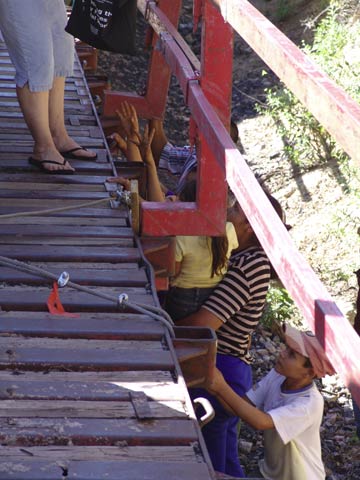
Since there was only a single track and our train was a slower moving train
(we traveled at about 15 - 20 mph), we were shuttled off on to a siding when a
faster train needed to pass us, or to let an oncoming train get through.
Children living near the siding used this as an opportunity to come and ask for
"candy", "money", or "pencils"; they had learned English to ask for these three
things. Generally we didn't give them anything since we didn't want to encourage
begging, although we did give out the rest of the school supplies that we had.
The children came so close to the railroad car that it made me nervous; if the
train had started moving at that point, someone might have been injured.
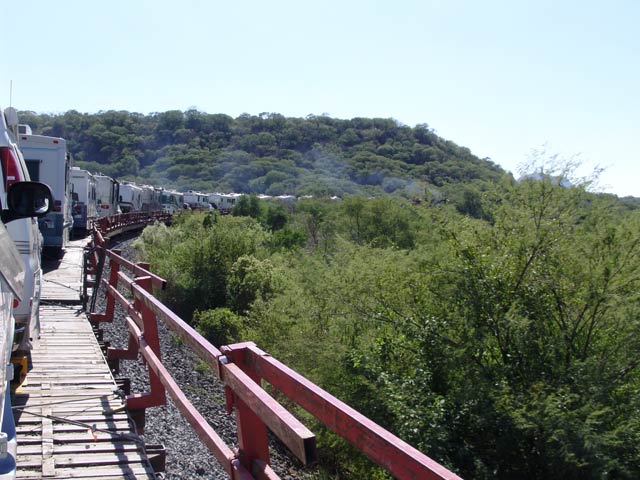
Gradually the canyons opened up and we were on the coastal plain heading for
the Sea of Cortez. At this point the train ride started to become boring.
When we reached El Fuerte, we left the train and went into the city for
sightseeing and dinner, while our RVs continued on the train to Los Mochis.
After dinner we were bussed to Los Mochis to spend our last night in our RVs on
the train. El Fuerte is an old, colonial city. It was founded in the 16th
century. The name means fort; there was a fort at this location. It has since
been turned into a museum.
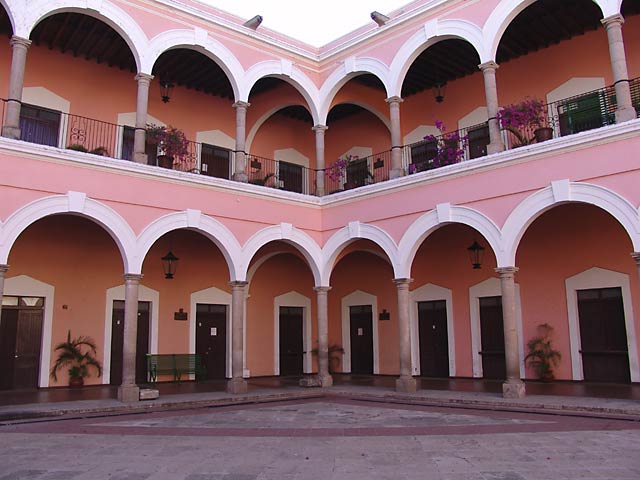
This is the government building in El Fuerte. It is built in the form of a
square surrounding an open court yard. Our guide, Alfredo, told us that that
three of the sides of the square are identical, but something was different
about the fourth side and challenged us to discover what was different about it.
Nancy figured it out; three sides have 11 arches, and the fourth side has 10
arches. All the arches are the same size, so the building is not really square.

A very nice hotel in El Fuerte, where we stopped for some refreshments. The
Mexicans use such bright and vibrant colors in their buildings.
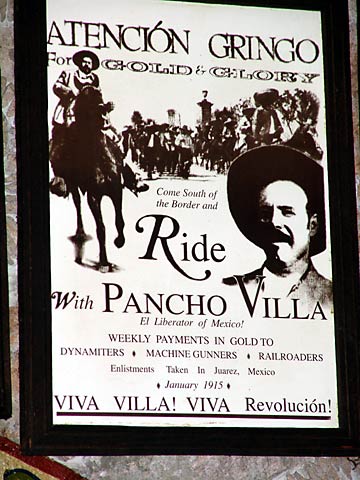
A poster in the hotel bar.
This concludes our train trip through the Copper Canyon. Tomorrow our RVs will
be unloaded from the train; we then travel along the Sea of Cortez (Gulf of
California), visiting old cities and enjoying the warm weather and the beaches.